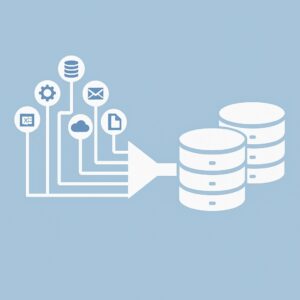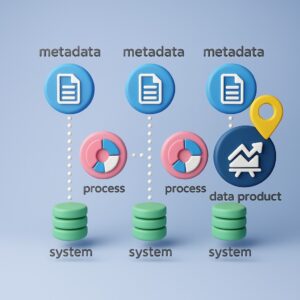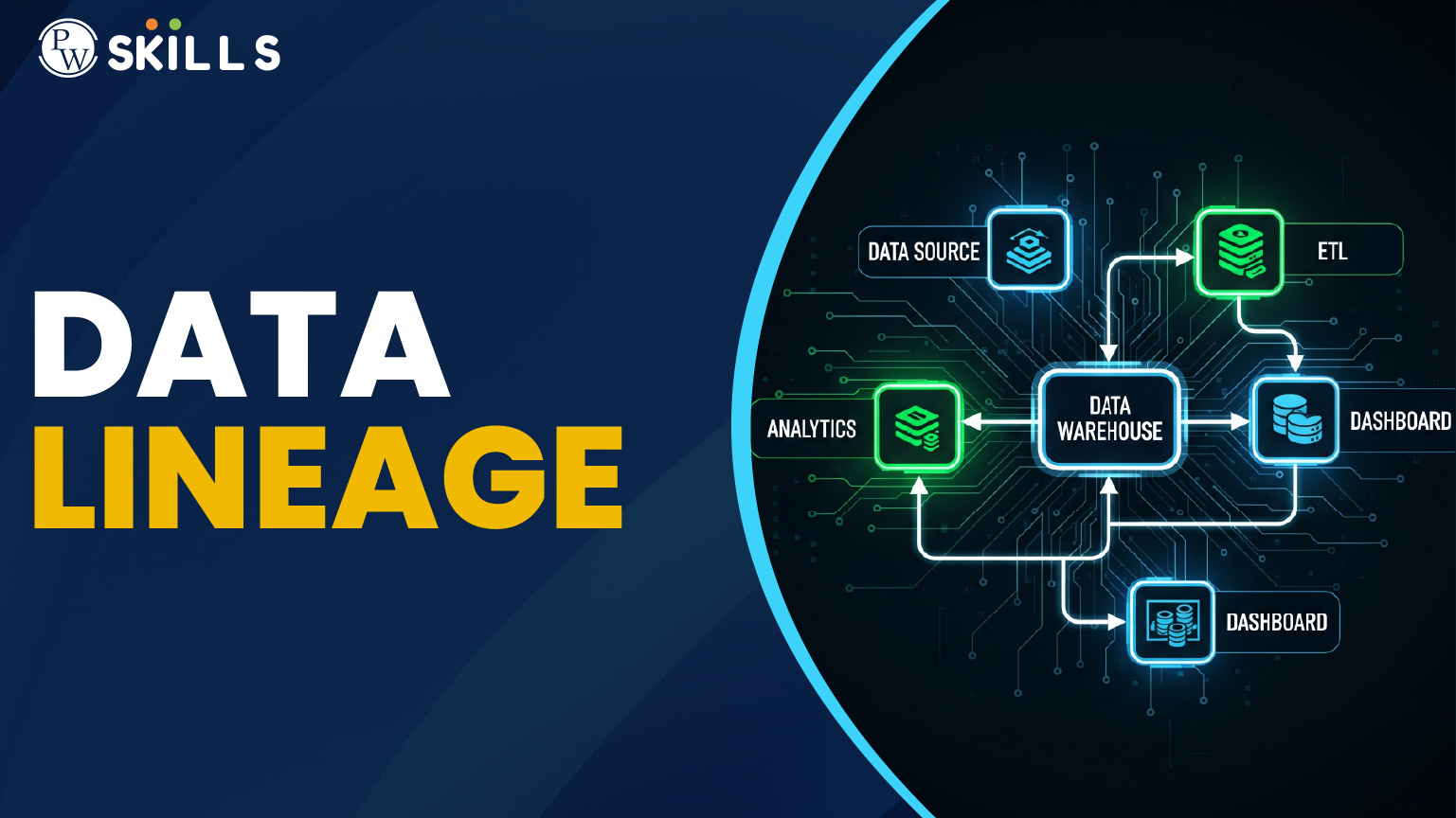The Data-Lineage appears to be an ICT technical term focusing on processing data in this digital world. Think of Data Lineage like GPS for data. It defines the entire life of data, where, to where, under what circumstances, and into which new horizon it travels. For students and professionals working with data, the understanding of Data-Lineage is like a built-in road map when driving through a new city. Typically, in this way, Data-Lineage would foster transparency, good data quality, and better clarity in decision-making.
Simply said, Data-Lineage is an act of tracking and visualizing data as it flows through various systems. Any sort of work you do, like cleaning data for reports, transforming it for reports, or using data to build dashboards, can be done much more reliably and accurately simply by knowing the history of that data.

Data-Lineage Explained
Data-Lineage puts on record the passage of data from its source to its destination. It helps us view how data elements relate to each other along the way through databases, files, tools, and reports. That can, in itself, be particularly useful whenever an audit, debugging, or compliance issue arises.
Benefits of Understanding Data Lineage
Having knowledge about a dataset’s Data Lineage bears the following range of advantages:
- Transparency: You know where the numbers are derived from.
- Trust: Decision-makers are empowered when they know data comes from ironclad sources.
- Debugging: Something went wrong with the report-trace back and fix it faster.
- Compliance: Aiding compliance with regulations like GDPR by tracking how personal data travels and is eventually used.
- Better Collaboration: Common language among teams across departments to understand data flows.
Data-Lineage Tools You Ought to Know
Since you already know what Data-Lineage is, let’s move toward some tools that assist in tracking it. It doesn’t matter whether you are a student learning about databases or a professional managing cloud systems; these tools help ease your job:
- Apache Atlas: An open-source tool that gives a precise map of data movement, often complemented by Hadoop.
- Alation: A data cataloging tool, capable of tracking lineage for changes and usages.
- Collibra: An enterprise-grade solution for visualizing Data Lineage and managing data governance.
- Google Cloud Data Catalog: A very good solution for GCP users with automatic Data Lineage generation.
- Microsoft Purview: Tailored to suit Azure users and integrates very well into the Microsoft data ecosystem.
- Talend: A combination of data integration with Data-Lineage for full traceability.
- Octopai: Renowned for its automated approach by fast scanning and mapping of data flows across data platforms.
These tools provide visual flow diagrams, dashboards, and trace paths for easier comprehension of Data-Lineage.
Everyday Techniques for Data Lineage
It is important that we know the Data-Lineage techniques that work behind the scenes, along with the tools:
- Manual Lineage Mapping: Data analysts follow source-to-destination mapping using spreadsheets and documents.
- Automated Lineage Tracking: The more-modern tools generate lineage graphs automatically using metadata.
- Active Lineage: Elucidates the real-time movement of data, relevant for faster environments and architectures.
- Passive Lineage: Historical tracking, relevant for audits and reports.
- Cross-System Lineage: Understanding flows across platforms such as Salesforce, AWS, and SQL
Once mastered, these Data Lineage techniques can turn you into a data troubleshooter, accuracy enhancer, and excellent reporter.
![]() Join Our Data Analytics Telegram Channel
Join Our Data Analytics Telegram Channel
![]() Join Our Data Analytics WhatsApp Channel
Join Our Data Analytics WhatsApp Channel
Some Concrete Examples of Data Lineage in Action
Following are a few examples that will bring this closer home:
- Healthcare: Patient data from hospital visits undergoes tracking from registration to billing to insurance claims. Here Data Lineage ensures accuracy and compliance with regulations.
- Banking: When a loan application is processed, Data Lineage aids in tracing customer information through credit checks, approval systems, and onward to final decisions.
- E-commerce: Sales dashboards use Data Lineage to track customers’ interactions from clicks to checkouts to ensure that KPIs are accurate.
- Education: Student data from online learning platforms can be traced from sign-up to course completion to performance analysis.
In all the above-mentioned situations, Data Lineage provides transparency, trustworthiness, and accountability.

Challenges While Implementing Data Lineage
While Data Lineage sounds amazing, there are some challenges associated with implementation.
- Data Silos: It is cumbersome to track lineage when information is stored across disconnected systems.
- Inconsistent Metadata: Poorly labeled data can lead to tools failing to track it.
- Tool Integration: Not all tools are compatible; smooth integration is a necessity.
- Scalability: If Data grows, your lineage needs to grow with it.
- Skill Gaps: Professionals must undergo training concerning both tools and Data Lineage.
Still, with all these hurdles, the returns on investment in Data Lineage can be very promising, especially for organizations large in data volume.
The Future of Data Lineage and Why You Should Care
As a data-centric civilization, Data Lineage will gain much validity in future times. AI and machine learning depend on clean and trusted data; hence it is almost becoming a necessity to establish the traceability of data to its every point. Students entering data roles and experienced professionals working in analytics, development, or governance need to get a better feel for Data Lineage.
How a Data Analytics Course would help you get your career boosted in Data Lineage
For those who want to step into the arena of Data Lineage, Data Analytics is the perfect launching pad that gives a head start. It prepares one for practical experience in wrangling, visualizing, and understanding metadata, which eventually lays down the foundation for lineage tracking. The way you will trace where data came from, catch anomalies, and build workflows that are clean, accurate, and auditable will be learned. As demand increases for transparency in all data-driven decisions, this knowledge can put you on the front line as innovations in the field increase, for example, as a data analyst or BI developer, or even a data governance lead.
Also Read:
- What Is a Data Warehouse? A Major Shift With Cloud Data Warehouse
- What Is Data Exchange? Complete Explanation For Beginners
- Data Exploration 101: The First Step to Smarter Analytics
- From Data to Decisions: The Complete Guide to Manufacturing Analytics in 2025
Start Your Tech Journey with PW Skills
Surge ahead in core analytics skills through PW Skills’ Data Analytics course. Learn the industry-related tools, skills, hands-on techniques, and real-world case studies to upskill. This course is designed for both students and working professionals alike. Enroll now and enjoy the perks.
Data Lineage tracks data flow and transformation over time, while data mapping shows the relationship between data fields across systems. Yes, Data Lineage helps track the origin and transformation of datasets used in training machine learning models, ensuring accuracy and fairness. Not always. Many modern Data Lineage tools offer low-code or no-code interfaces, making them accessible to analysts and business users too.Data Lineage FAQs
How is Data Lineage different from data mapping?
Can Data Lineage be used for machine learning models?
Do I need coding skills to work with Data Lineage tools?

